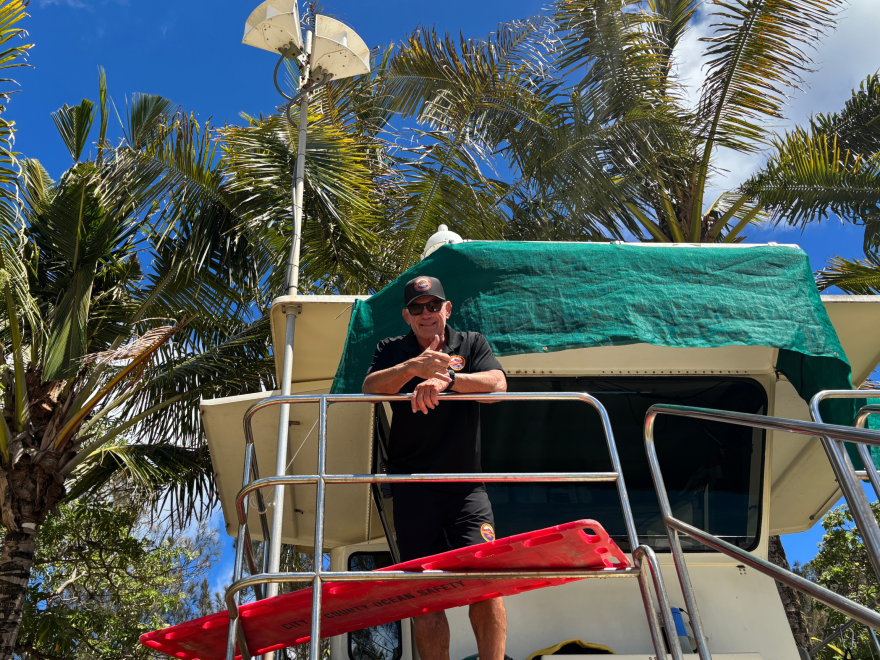“I said I was only going to do this job for a couple of years, until something better came along,” said Kerry Atwood. More than a couple of years have passed for the longtime Waimea Bay lifeguard.
Widely known for its famous “jump rock,” high surf in the winter, and horrible parking, Waimea Bay was calm and sunny when HPR met up with Atwood.
Amid the shouts of beachgoers jumping off the rock and the waves crashing on the shore, Atwood took a seat at a bench near the lifeguard tower.

Surrounded by lifeguard equipment, trucks and ATVs, Atwood recalled what sparked his interest in wanting to become a lifeguard.
Atwood began his career as a lifeguard at Waimea Bay in 1989, not far from where he was raised. For the past nine years, he’s been a lieutenant with Honolulu Ocean Safety. He grew up on the North Shore of Oʻahu.
“I was this haole kid that had educated parents, and for some reason, I had a really hard time in school. I wanted to do something that didn't require sitting at a desk or paperwork or that kind of stuff,” he said.
One day, Atwood skipped school and went to Waimea Bay to bodysurf with his friends. That one beach trip influenced his 36 years in ocean safety.
“I was blown away watching them run this beach in these dangerous conditions and actually, like, save people's lives,” he told HPR.
“I was 100% convinced that had there not been lifeguards on duty, they they would would have never made it back to the beach. And I said to myself, ‘Wow, now that's something that I can see myself doing.’”
Atwood said that a typical day for a lifeguard includes assessing various situations, dangerous spots and evolving conditions.
“As a North Shore lifeguard in particular, you become very good at profiling people. You just see people that show up at the beach on a day where you know that the conditions are extremely dangerous and they don't fit a certain profile, whether it's the surf shorts they have on, the amount of sunscreen, you know, the equipment that they have,” he said.

He recalled a harrowing rescue in rough, barebones conditions – right as the sun was setting.
“I remember looking out and seeing what I thought were two coconuts floating maybe 200, 250 yards offshore in the rip,” he said. “And I grabbed my binos and I looked, and we saw two military guys, going out in the rip.”
Back then, he said, crews were not as well-equipped as they are now.
“We didn't have our jet skis. It was just lifeguards with their fins, their tube and their rescue board.”

He and his crew were able to swim out in up to 20-foot surf in the dark and bring the two men back to shore.
“I remember getting back to the beach and thinking to myself, did we do that?” he said. “It was one of those memorable moments where I think every lifeguard has it, where you kind of doubt yourself. By the grace of God, we got that one off.”
Every year, lifeguards have to pass a rigorous physical performance test. Now at 58 years old, Atwood still has to pass this same test.
“We don't have a sliding scale where they give you more time the older you get, he said. But you do this job long enough, and it's something that you know you're constantly training for.”
Atwood has no plans to retire soon. However, being a lieutenant is the highest he wants to go within the department. He said he does not want to become a captain.
“I'm older. I'm still physically fit. I train. I love training. I love getting in the ocean as much as I can. I still feel I'm an asset. When I feel like I'm not, then it'll be time for me to graciously bow out.”
This story aired on The Conversation on Oct. 7, 2025. The Conversation airs weekdays at 11 a.m. Tori DeJournett adapted this story for the web.





